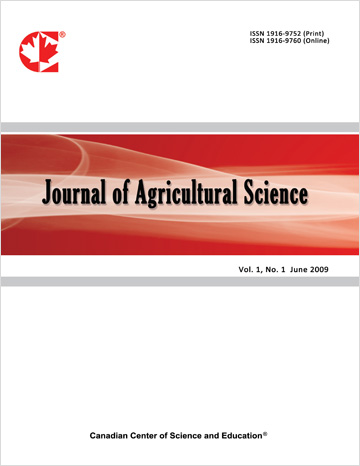Does Rotational Grazing Based on Leaf Expansion Duration Modify Grazing Behavior and Feed Intake of Beef Heifers on Natural Grassland?
- Bruno Castro Kuinchtner
- Fernando Luiz Ferreira de Quadros
- Fernanda Maurer Taschetto
- Gabriela Machado Dutra
- Liane Seibert
- Fernando Ongaratto
- Pedro Trindade Casanova
Abstract
Grasslands develop a multifunctional role to humanity, with unique fauna and flora, besides being the primary feed source for herbivores. However, grasslands are usually considered a low-efficiency production system, often converted into other land uses such as crops and forestation (e.g., south Brazil). This study aimed to evaluate the effect of two rest intervals between grazing occupations in rotational grazing on the grazing behavior and feed intake of beef heifers. Two grazing intervals, 375 and 750 DD (degree-days) were used; based on the cumulative thermal sum necessary for the leaf expansion of native grasses of two functional groups. The experiment was conducted as a completely randomized block design, with two treatments, three replications, and repeated measures over time. The grazing behavior was evaluated continuously for 18 hours (7 a.m. to 11h59 p.m.). Herbage intake was estimated using an external marker (Cr2O3) in four periods (one for each season). The green leaf mass was similar between treatments, with a mean of 40% of the pregrazing mass (kg DM ha-1). On average grazing, time was 50% of the period, and the bite rate was 38.7 bites min-1. The number of daily meals was 6.5, with an average of 84 minutes for each meal. The number of feeding times (feeding stations by minute) visited was 6.4. On average, there was a 2.23% difference in dry matter intake (% BW) among seasons. Neither ingestive behavior or forage consumption of heifers was affected by the treatments, both maintain similar chemical composition on natural grassland.
- Full Text:
 PDF
PDF
- DOI:10.5539/jas.v13n10p85
Journal Metrics
- h-index: 67
- i10-index: 839
- WJCI (2023): 0.884
- WJCI Impact Factor (2023): 0.196
Index
- AGRICOLA
- AGRIS
- BASE (Bielefeld Academic Search Engine)
- Berkeley Library
- CAB Abstracts
- ChronosHub
- CiteSeerx
- CNKI Scholar
- Copyright Clearance Center
- CrossRef
- DESY Publication Database
- DTU Library
- e-Library
- EBSCOhost
- EconPapers
- Elektronische Zeitschriftenbibliothek (EZB)
- EuroPub Database
- Excellence in Research for Australia (ERA)
- Google Scholar
- Harvard Library
- IDEAS
- iDiscover
- Jisc Library Hub Discover
- JournalTOCs
- KindCongress
- LIVIVO (ZB MED)
- LOCKSS
- Max Planck Institutes
- Mendeley
- MIAR
- Mir@bel
- NLM Catalog PubMed
- Norwegian Centre for Research Data (NSD)
- Open J-Gate
- OUCI
- PKP Open Archives Harvester
- Polska Bibliografia Naukowa
- Qualis/CAPES
- RefSeek
- RePEc
- ROAD
- ScienceOpen
- Scilit
- SCiNiTO
- Semantic Scholar
- SHERPA/RoMEO
- Southwest-German Union Catalogue
- Standard Periodical Directory
- Stanford Libraries
- SUDOC
- Swisscovery
- Technische Informationsbibliothek (TIB)
- Trove
- UCR Library
- Ulrich's
- UniCat
- Universe Digital Library
- WorldCat
- WRLC Catalog
- Zeitschriften Daten Bank (ZDB)
Contact
- Anne BrownEditorial Assistant
- jas@ccsenet.org
